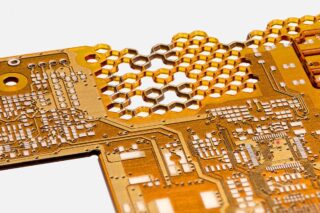With many still acknowledging that 3D printing has yet to quite live up to the hype, it’s nonetheless a promising field and a technology that has faced some hurdles along the way. With the industry on track to grow from $14.7 billion in 2023 to $58.7 billion by 2032, Henrike Wonneberger, COO at Replique looks at how Artificial Intelligence (AI) could be a key driver to achieving such growth.
AI is already making waves in other industries by helping businesses automate complex tasks, make smarter decisions, and improve efficiency. In 3D printing, AI is poised to solve some of the major technical challenges holding the technology back, like quality and scalability. By optimizing designs, monitoring print quality, and making production more scalable, AI could be the key to pushing 3D printing into the mainstream.
The current challenges and how AI is stepping in to solve them can be outlined as follows:
3D Printing: More Than Just Trial and Error?
Achieving high precision in 3D printing can be tricky. The quality of the print can be affected by a range of factors—material choice, process errors like over- or under-extrusion, and design mistakes, to name a few. These issues can lead to defects such as increased porosity, poor mechanical properties, cracks, distortions, or incomplete parts. Not only does this waste resources, but it also extends production times.
Typically, getting a quality print involves a lot of trial and error. Even if you get it right once, there’s no guarantee the next print will turn out the same, if you’re using a different printer. This brings us to the next big hurdle: scalability.
READ ALSO
The Scalability Struggle
While 3D printing is great for prototyping and small-batch production for now, scaling up for mass production is another story. Maintaining consistent quality across large print jobs is difficult, limiting its use in high-volume industries. Automation is a critical gap that still needs to be addressed. Plus, the costs are often too high for mass production – unless, at least in some cases, the designs are optimized for additive manufacturing (AM).
Traditional Design vs. Design for AM
Design for traditional manufacturing is not the same as designing for additive manufacturing. However, traditional CAD tools can be pretty limiting when it comes to 3D printing. They aren’t always optimized for 3D printing’s unique requirements, leading to inefficient designs and longer development cycles.
To overcome these limitations, integrating AI into the design process could offer substantial benefits.
Generative Design: The New ChatGPT for Designers?
With AI, designs can be optimized for better printing, and even create lighter and stronger parts. AI can highlight areas for improvement, suggest modifications, and explore new design possibilities that human designers might miss. These AI-generated designs often look more like natural structures, such as bones, rather than traditional parts.
Several AI-based software packages, like Autodesk‘s Netfabb, are already evaluating and optimizing design files for 3D printing using generative design. By inputting the desired parameters, manufacturers can let AI find the most efficient way to design the part, minimizing the need for endless simulations and iterations. This makes 3D printing more efficient and cost-effective.
There are even tools that allow users to upload 2D images or describe what the part should look like, and AI takes over the rest, just like ChatGPT for texts or Midjourney for images.

Broader Adoption Through Design Automation
AI-driven design automation makes 3D printing more accessible by simplifying complex processes and lowering the entry barrier. By automating design iterations and optimizations, AI enables engineers and designers of different skill levels to efficiently create sophisticated parts and assemblies. This streamlines prototype development, reducing both time and resource expenditure, and promises to expand 3D printing applications across diverse sectors.
Monitoring and Predicting Defects
AI can also monitor the printing process in real time, predicting potential defects and adjusting parameters to prevent errors. By analyzing sensor data continuously and leveraging machine learning models trained on extensive datasets, AI enhances print precision. This mitigates issues like warping and layer misalignment, ensuring higher-quality outputs and minimizing material waste. In turn, this improves overall print reliability and efficiency.
Enhancing Consistency and Scalability
AI helps scale 3D printing for mass production by optimizing workflows and ensuring consistency across multiple machines. Advanced algorithms can coordinate large-scale print jobs and ensure that each printer operates under optimal conditions. By boosting efficiency and reducing failed prints, AI lowers the overall cost of 3D printing, transforming it into a scalable and reliable production method suitable for various industrial applications.
AI and 3D printing are already transforming industries like healthcare, aerospace, and automotive. From creating custom prosthetics to optimizing lightweight structures for aircraft, the impact is significant. While AI might seem like a buzzword in some contexts, in 3D printing, it is a game-changer.











